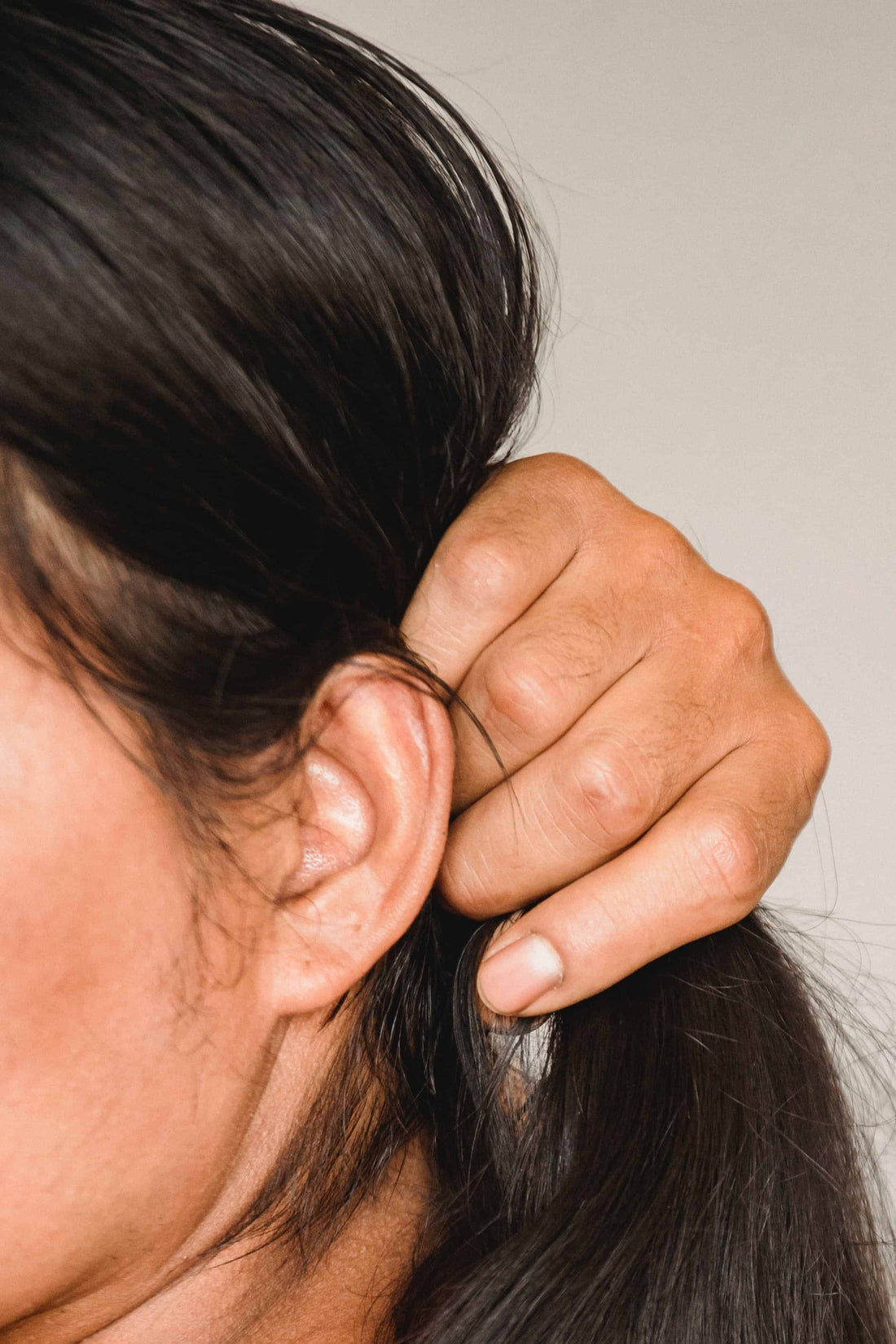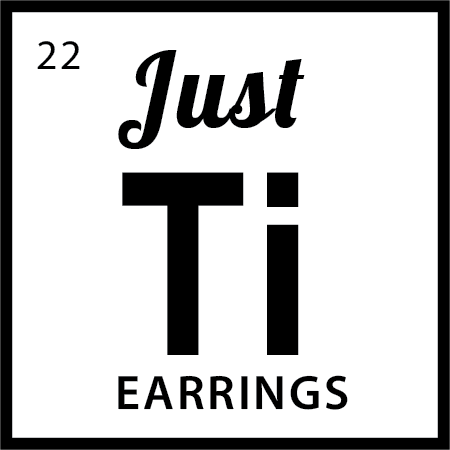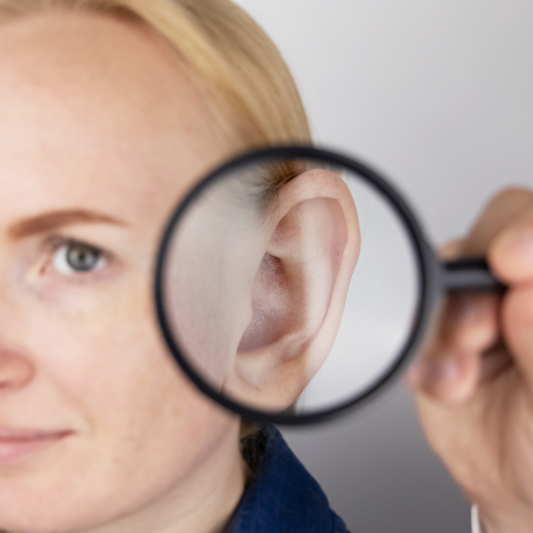
How do I Know if my Earrings are Nickel Free
Share
A nickel allergy is a type of contact dermatitis, which is an inflammatory skin condition. People with a nickel allergy develop an immune system response when nickel comes in contact with skin, a metal commonly found in jewelry, including earrings. The allergic reaction occurs because the body mistakenly identifies nickel as harmful.
What you might see:
-
Redness and Rash: The most common symptom is redness and a rash on the skin where the earrings come into contact. This rash can be itchy and may develop within 12 to 48 hours after exposure.
-
Swelling: The affected area may swell, becoming more pronounced around the site of contact with earrings containing nickel.
-
Blisters and Bumps: In some cases, small fluid-filled blisters or bumps (vesicles or papules) may appear on the skin. These can be uncomfortable and may cause further irritation.
-
Pain and Discomfort: The skin can be tender, and individuals with a nickel allergy may experience pain or discomfort around the earrings.
It's important to note that nickel allergies are common, and even small amounts of nickel can trigger a reaction in sensitive individuals. If you suspect a nickel allergy, it's advisable to avoid nickel-containing jewelry, including earrings. If symptoms persist or worsen, it's essential to seek medical advice for proper diagnosis and management.

How do I know if my earrings are nickel free
-
Check the Label or Product Description:
- If you purchased the earrings from a reputable source, check the label or product description for information about the material. Many jewelry items will explicitly state if they are nickel-free, hypoallergenic, or made from materials known to be safe for individuals with nickel allergies. Also keep in mind that not all jewelry is marketed / labeled accurately.
-
Ask the Seller or Manufacturer:
- If you're uncertain about the material or if the information is not readily available, reach out to the seller or manufacturer. They should be able to provide details about the composition of the earrings and whether they are suitable for individuals with nickel allergies.
-
Perform a Patch Test:
- If you have a known nickel allergy or are unsure about the earrings' composition, consider doing a patch test. Place a small amount of the earring material on a small area of your skin and observe for any signs of irritation or an allergic reaction over a 24 to 48 hour period.
-
Use a Nickel Testing Kit:
- Nickel testing kits are available that can help you determine if an item contains nickel. These kits often involve applying a testing solution to the earrings and observing the reaction. However, these tests may not be foolproof, and it's still a good idea to confirm with the seller or manufacturer.
Do nickel free earrings turn green
Nickel-free earrings are less likely to cause skin discoloration compared to earrings containing nickel. However, it's essential to understand that the green discoloration often associated with jewelry is not directly caused by nickel itself but rather by the reaction between metals in the jewelry and the wearer's skin.
Here are some factors that can contribute to earrings turning the skin green, even if they are nickel-free:
-
Base Metals: Some jewelry, including those labeled as nickel-free, may be made from base metals or alloys that contain other metals like copper or brass. When these metals react with the acids in the skin and moisture, they can oxidize, causing the skin to turn green.
-
Skin pH and Moisture: The pH level of an individual's skin and the presence of moisture can influence the likelihood of skin discoloration. People with more acidic skin may experience a greater likelihood of their jewelry causing skin discoloration.
-
Environmental Factors: Exposure to certain environmental factors, such as humidity and the presence of substances like lotions or perfumes, can contribute to the oxidation of metals and may impact the appearance of the jewelry and the skin.

Is stainless steel nickel free? Is gold?
Stainless steel can contain nickel, but it is generally considered to be a nickel-free option for most people with nickel sensitivities. This means stainless steel and even what's called surgical steel is not completely hypoallergenic and some wearer's will still have a reaction.
Stainless steel is an alloy made primarily of iron, with chromium being the essential alloying element that provides corrosion resistance. While most stainless steel contains nickel, it is often in small amounts, and the type of stainless steel used can vary.
Here are the common types of stainless steel and their nickel content:
-
300 Series Stainless Steel: This series, including types like 304 and 316, is commonly used for jewelry. It contains nickel, but the nickel content is usually low. Many people with nickel allergies find that they can wear jewelry made from 300 series stainless steel without experiencing adverse reactions.
-
400 Series Stainless Steel: This series, such as type 440 or "surgical stainless steel", is less commonly used for jewelry but is used in some cases. It may contain lower levels of nickel but there is no federally recognized certification to be called "surgical stainless". This means it is difficult to determine the nickel amounts.
Pure gold (24 karat gold) is generally nickel-free. Gold in its purest form is a very soft and malleable metal, and it does not contain nickel. However, in jewelry-making, pure gold is often alloyed with other metals to improve its durability and hardness.
The choice of alloying metals can vary, and most gold alloys include nickel. It's essential to be aware of the karat of the gold to determine its purity and potential nickel content. Common gold alloys include:
-
18 Karat Gold (18K): This gold alloy contains 75% gold and 25% other metals. The "other metals" can include copper, silver, and sometimes nickel.
-
14 Karat Gold (14K): This gold alloy contains 58.3% gold and 41.7% other metals. Again, the additional metals may include nickel in some cases.
-
10 Karat Gold (10K): This gold alloy contains 41.7% gold and 58.3% other metals. At this purity, the other metals very likely include nickel.
Do all earrings have nickel?
Happily, no. There is a growing supply of stylish and affordable earrings made from materials that contain Zero Nickel. Whether you want simple studs or flashy dangle earrings, or even want to wear both using our TI-GO base, Just-Ti earrings are made from Titanium and have Zero Nickel. Hundreds of our customers regularly update their collections with confidence that they can wear great earrings and be nickel free.

